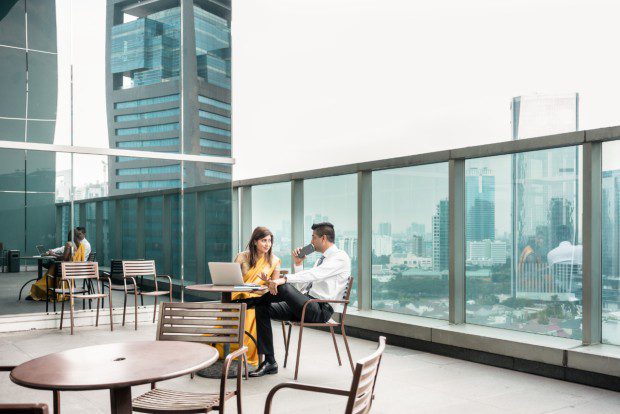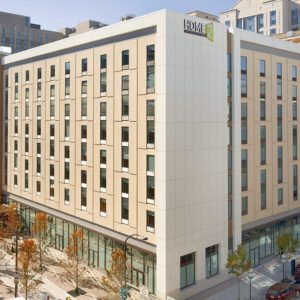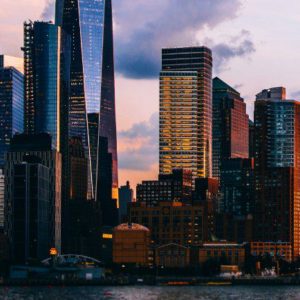The outdoors a wonderful reprieve from stuffy office spaces, especially this time of year as we look to the wonders of spring. With some states beginning to ease restrictions due to the coronavirus pandemic, the allure of being outdoors is even more fetching to a stir-crazy public. Many have also listened to the advice of health experts, who have stated that people are less likely to get the coronavirus while outdoors.

Biophilic design strategies are well-known to benefit building inhabitants, and living and work areas that flow into the outdoors can be eye catching, boost indoor air quality and add a more comfortable feel to commercial spaces.
Cohesiveness between a building’s interior and exterior has a big impact on the appeal of public buildings, especially in the retail and hospitality sectors. Per Beverly, Massachusetts-based PionArch LLC.:
Interior design can contribute to a building’s exterior as well. For example, it can play a major role in the appeal of the building’s exterior, especially when the frontage consists of large windows that provide a clear view indoors. For the likes of cafes, restaurants, and retail shops, this makes the street-facing portion of the interior just as important as the exterior when it comes to attracting customers.
This blurred line between interiors and exteriors is becoming stronger, as more businesses are starting to utilize designs with indoor/outdoor spaces.
For the office, outdoor spaces can be more than just leisure escapes for workers. With proper design choices, functional work environments located outdoors can spur creativity and employee engagement. Research from New York–based designer and author Jonathan Olivares, as appeared in Interiors+Sources, states:
Some companies have outdoor spaces, but they treat them as leisure space: cafes, gardens, patios. I think if they put business furniture and power and data outside, that would make a huge difference. It would make it look like a workplace instead of a barbecue or café.
As working habits change and our mobile devices, attached to us like appendages, allow us the freedom to work outside traditional offices, increasingly we are seeking alternative spaces that make productive activities feasible outdoors. This in turn demands new types of outdoor furniture and architectural elements.
Rather than incur the costs associated with costly redesigns, biophlic design elements can also be incorporated into a building’s design on much smaller scale. Natural elements such adding plants and even living walls, lighting, increased air flow, water features and natural finishes can all be installed in a much smaller scale.


